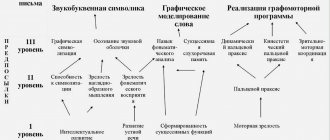Classifications
Different researchers understand emotional processes differently and classify them differently. There are theories (for example, S. Schechter’s two-factor theory of emotions) that even suggest the existence of only one
emotions, which, depending on various factors, can cause certain experiences. According to such theories, there is nothing to classify.
Many Western researchers, studying emotional processes, pay attention to them as a whole, focusing on general patterns and the nature of the phenomenon. Such researchers usually use the concept “emotion” to refer to any emotional processes, and the task of classification is beyond the scope of their work
For example, K. E. Izard assumes that there is a set of 10 basic emotions, and considers all other emotional processes as their combination and modifications. Accordingly, he pays main attention to basic emotions, and not to the classification of derivatives.
Affects, emotions, feelings, moods
In Russian psychology, the practice of classifying emotional processes into affects, emotions and feelings, depending on their psychological characteristics and patterns of occurrence, has become widespread. Often moods are also distinguished as a separate class. The result is the following classification:
- Affects are short-term and intense emotional processes, accompanied by pronounced motor manifestations and changes in the functioning of internal organs. For example, fear.
- Emotions are longer-lasting and less intense than affects, emotional processes that reflect the subjective meaning of situations, but not specific objects in themselves. For example, anxiety.
- Feelings are longer lasting and less intense than affects, emotional processes that reflect the subjective meaning of specific objects. For example, hatred.
- Moods are fairly long-lasting emotional processes of low intensity. For example, boredom.
Basic emotions
Many researchers are trying, for various reasons, to identify the so-called basic
or
fundamental emotions
- that is, those elementary emotional processes that make up the entire diversity of a person’s emotional life. Various researchers offer different lists of these emotions, but a single and generally accepted one does not yet exist.
examines 18 basic and 4 complex emotions.
C. E. Izard offers the following list of basic emotions:
- interest - excitement;
- pleasure - joy;
- astonishment;
- grief - suffering;
- anger - rage;
- disgust - disgust;
- contempt - disdain;
- fear - horror;
- shame - shyness;
- guilt - repentance.
Dodonov classification
Soviet psychologist B.I. Dodonov proposed a classification of emotional processes based on, in his opinion, human needs associated with these emotional processes:
- altruistic;
- communicative;
- gloric;
- practical;
- fearful;
- romantic;
- Gnostic;
- aesthetic;
- hedonistic;
- active emotions.
Each person, Dodonov notes, has his own “emotional melody” - a general emotional orientation, characterized by the emotions that are closest to the person, desirable and constant.
What are emotions
We all experience emotions and feelings, and therefore each of us has a rough idea of what it is. Or at least he thinks so. However, we rarely think about how many there really are and how, for example, joy differs from pleasure, and anger from anger. And it’s not difficult to understand why, because when we experience emotions, we automatically consider them an integral part of ourselves, and therefore something taken for granted. Unfortunately, it often happens that it is precisely those things that seem too obvious to us that are most often left unattended.
Another reason is that we often experience complex emotional states or feelings. At such moments, we cannot accurately formulate what exactly we are experiencing - joy or just satisfaction, surprise or fear, and it also happens that a seemingly negative feeling such as nostalgia (sadness?) causes us something similar to both joy and to sadness at the same time. What about a whole cocktail of emotions, for example, disappointment, grief and anger, but this is nothing more than a well-known resentment.
Everything related to emotions may only seem simple and elementary, but in reality, it can be quite difficult to understand and realize the range of feelings that we experience at the moment - “here and now.” At best, we can identify only a few of our emotions, which seem to us the most significant, and only if they are quite pronounced. And probably everyone is familiar with the state when it is difficult to say what exactly we feel, to such an extent that it is impossible to say whether we are good or bad, happy or sad, and in general it is not clear how.
Why do we need to know about our emotions?
A logical question is whether an ordinary person living a normal social life needs to understand such things as the intricacies of his emotions?
Most people never think about such topics in their entire lives, although many understand that emotions are one of the essential components of our lives. So what? Is there a problem that we use many things, often without any idea of how they work?
This question is probably largely rhetorical. For example, there are such questions as “who am I”, “why do I live”, “what is my place in the world”, for some people they are just a whim, but for others, they are among the most important in life. And, if you are a person from the second category, then the question of emotions will not bypass your interest.
Why can knowledge about emotions and feelings be so important?
Perhaps because this is a question of what exactly I feel, and, if you think about it, this is what our life consists of.
Such a difficult question - how do I feel right now?
Close your eyes and try this. Try to answer this seemingly simple question. I won't be surprised that you'll probably be confused. And you will not only not be able to isolate your emotions separately, but also, you will not be able to describe your state so as to say with confidence - this is exactly what I really feel.
Sometimes it seems to us that this is quite possible. But this is either a delusion, or the emotion is so strong that at the moment it overshadows all others. This happens during stressful events. For example, we experience strong fear during a natural disaster, at such a moment it probably seems to us that we understand that our emotion is fear and nothing more. But now, the danger has passed, the fear has not yet passed, but has decreased so much that we begin to notice that in fact, he was not alone, but there was also surprise, interest, perhaps even delight, just at some point, the fear was so strong that we did not notice everything else.
The nature of the emotional background (integral emotional state) is such that it is always a bizarre mixture of a wide variety of emotions, and even if we could name each of them separately, in the aggregate, it will always remain something to which we can only give a vague name .
Reconstruction of an event from an emotional point of view
Imagine the situation - you are walking through the forest. You are in a hurry to get home, but it seems to you that you have lost your way, and every minute everything around you is getting darker and darker. Dusk is falling. Trees and their shadows take on bizarre and even mysterious shapes, the shadows lengthen, the sound of your steps conceals the carpet of fallen leaves. You are a little tense and anxiety is emerging in you drop by drop. You have neither a flashlight nor a compass and you begin to slowly curse your lack of foresight. Suddenly, when it’s almost completely dark, you see movement ahead of you, some kind of shadow that seems to you either a person or an animal. You felt cold and primitive horror touched you for a split second, but at that very moment the thought came that you were not so far from civilization and an attack by a predator was hardly possible. You calm yourself down and continue to slowly walk forward, and when you pass that place, you see that you have stumbled upon a path leading to a house, and the shadow that scared you so much turned out to be a small and harmless neighbor’s dog. At that very moment the moon rises and illuminates the path so that you can see the fence of the neighboring house very close by. You sigh with relief and go home. Usually we never think at such moments what exactly we feel. Most likely, if you tell this story to your friends over a cup of tea, you will mention the fear, and perhaps the final relief. This means that you only remember the two most powerful emotional moments of this short event. But did you only have two emotions?
Let's try to imagine what you most likely could feel during the described event, which lasted, for example, 2-3 minutes.
Analysis of probable sensations during the event
So, from the very beginning. We walk and a slight anxiety slowly arises in us, we don’t know what’s ahead. It is likely that we feel a slight chill in the solar plexus, stomach and back. We might even feel a little nauseous. We feel the ground with our feet and the slight coolness of the evening air, we feel annoyance (disappointment, and maybe slight anger) because we forgot the lantern and a slight feeling of guilt (disappointment with ourselves) because we forgot the way. We hear the sound of our steps and the rustling of leaves under our feet. Suddenly we see the movement of a shadow, a stream of horror (fear) immediately falls on us, our hands and back become cold and sweat appears, our knees tremble slightly, a story about vampires from a book we recently read flashes in our heads, but at the same moment a rational assessment of the situation comes and the horror passes, but we feel its traces for some time, the strong emotional wave has passed, but fear remains. For these few seconds this is the dominant feeling, at this moment it seems to us that we have only fear and nothing more. We approach a place that frightened us and feel apprehension, wariness (fear that has subsided, but still living in us) and hope that there is no one here and that everything seemed to us. And so, we go out onto the path, see the light of the moon, the dog and the fence, and a feeling of relief and slight joy arises in us that the situation ended so quickly and safely. Our mood (integral emotional state) returned to its previous level and we felt the emotional uplift that we may have felt all the time during today's walk in the forest. We remembered that friends and family were waiting for us in the house and in a few minutes we would see them. A feeling of love rises within us, which lifts our spirits even more and gives us warmth that we literally feel physically. It seems to us that the pleasant emotional range that has washed over us gives us additional strength, we breathe in clean air, quicken our pace, and get closer to home. From what we have experienced in the last few minutes, we begin to feel everything that is happening to us at the moment noticeably more acutely than before the event began.
This is, of course, not a complete list of sensations that we could experience in the described situation.
Of course, in such a situation, everyone would experience something different, but now, try to close your eyes and vividly imagine the described incident. How would you feel?
Now let's figure out what we felt.
1. We had physical reactions and sensations, some of them were consequences of the emotions that gripped us (cold, sweating, trembling, warmth), and some of them were the result of the world around us (sounds, shadows, smell, sensations of cold air and roads under our feet). 2. We experienced emotions - anxiety, fear, horror, frustration, guilt, relief, joy. Collectively, we experienced a rather complex emotional palette, let's call it a feeling and a mood. For example, remembering our loved ones, we experienced love and warmth, we restored what can be called emotional balance - a good mood (positive psychological state). 3. We rationally assessed the current situation and this assessment obviously influenced our emotional background. In addition, memory mechanisms were involved, for example, we remembered the book we read and, most likely, recalled similar situations that we may have found ourselves in before. It is quite possible that some of the memories came to us from the subconscious; these could be some traumatic old events that we had previously repressed from our “working memory”. But not only that. We also involved some memory of the emotions we had previously experienced, because otherwise, how would we know that horror is horror, and joy is joy. In addition, we experienced an automatic reaction - horror (fear), which was not at all a consequence of a rational assessment of events. We simply saw a shadow in the forest, and at the same moment, we automatically felt a powerful emotion and a rush of adrenaline, which generated physical reactions in the body, such as extreme excitement, trembling knees, sweating and coldness in the back.
This is what the consequences of the little thriller we experienced could have been. And all this happened within no more than 2-3 minutes.
An analysis of your experience may tell you that everything that usually happens to us in life from the point of view of an emotional response is much more complex than we might usually think. As an exercise, try doing a similar analysis in your own situation one day. Describe what exactly you experienced, try to isolate individual emotions, describe the general emotional state, whatever you would call it. How and to what your body reacted. What were you thinking, what memories came to you.
So, emotions may differ:
- By intensity (for example, anxiety and horror obviously belong to the same group (fear), but they are different in intensity).
— We are perceived as high quality. For example, as pleasant, unpleasant and neutral (joy is usually perceived as a pleasant emotion, and fear as unpleasant - but this does not always happen).
— Emotions are associated with memory and with sensations in the body (they can both generate these sensations and be generated by them).
- They are conditioned. That is, they are connected with a cause and at the same time they are expedient (they arise as a result and for something).
For example, the cause of an emotion can be an automatic reaction to danger, such as horror, which arose in us without the participation of a rational understanding of the situation. The expediency of such an automatic reaction is inherent in us by nature. This is preparation to either escape or fight for your life. At this moment, a powerful animal and automatic reaction instantly prepared our body for survival without the participation of our rational mind, which is too slow in such situations. A quick and strong irrational emotion can be very helpful.
— We evaluate emotions from rational positions. For example, we have an understanding of what this or that emotion is called, what it is associated with, we evaluate its quality and intensity (note that here we are talking about two different assessments: the direct perception of an emotion, for example, its intensity and quality, and also, the subsequent rational assessment of what has already been experienced.
— Emotions can also be complex (composite), and together create an integral emotional background, which, upon careful examination, is the sum of emotions of different intensity and qualities. For example, the feeling of guilt that we virtually experienced in the described situation is a complex feeling and consists of several, more elementary emotions - fear, shame, anger and grief.
It is necessary to distinguish between guilt and shame, shame is an emotion concerning who I am in general (as a rule, this is an unpleasant feeling that arises as a result of a reaction to the inconsistency of our real internal qualities with our expectations), and guilt is an emotional reaction to the inconsistency of our actions, to our expectations. Naturally, this line is rather conditional, because actions can be performed in one’s imagination and thus feel guilty for something that was not actually done in reality.
Mood and feeling are complex emotional states
Mood is an emotional background (a mixture of different emotions), subjectively perceived by a person as more or less constant. The mood can be perceived as pleasant, unpleasant or neutral, and also differ in intensity, depending on the intensity and ratio of its constituent emotions and on the current situation of the external and internal world (physical events, thoughts, assessments).
A feeling is an emotional background that is more stable over time and, unlike a mood, it is more directional, that is, it is an emotional picture that is more clearly associated with certain events, people, and ideas. Feelings, like moods, depend on events in the external and internal world, however, this dependence gives an emphasis on significant events that are elements of fairly strong attachments.
We looked at emotions in their various manifestations in relation to a specific situation and found out what differences they have from each other, and what they may depend on. Is there some kind of system to this?
Psychologists have not come to a consensus regarding the nature of human feelings. There are quite a few psychological theories of emotions and feelings; the approach of their authors is sometimes significantly different. However, there is something in common. Most psychologists believe that human emotions arose as vital mechanisms necessary for survival. Our automatic response in the forest illustrates this point perfectly. And such a reaction is no different from the automatic reaction of an animal to a significant event.
Nonverbal diagnostics of emotional states (A.O. Prokhorov)
Appointment of the test. To study the emotional state, you can use a color-drawing test for diagnosing the mental states of younger schoolchildren. Through drawing and color, students can express what is difficult for them to say in words due to insufficient development of self-awareness, reflection and identification. In addition, due to the attractiveness and naturalness of the task, this technique helps to establish good emotional contact and relieves the tension that arises in the examination situation.
Required material. To work, you need to have a sheet of white paper and colored pencils: red, blue, green, black, brown, orange, blue, pink. A square measuring 50x50 mm should be drawn on a sheet of paper on the left side (the right side will be intended for drawing).
Instructions for the test.
Instruction No. 1. Guys! In front of each of you is a piece of paper and colored pencils. A square is drawn on a piece of paper on the left side. Now you need to depict your state in this square with a colored pencil, that is, what you are currently experiencing. If your condition cannot be drawn in one color, then divide the square into several parts and paint it with pencils of different colors. In this case, it is recommended to show with chalk on the board how the square can be divided (one diagonal, two diagonals, a horizontal line, two perpendiculars into four parts, horizontally and perpendicular to it into three parts, etc.)
After the students complete the task, the experimenter gives Instruction 2.
Guys! Now each of you has depicted your state in color, and now think about what your state looks like, in what form you could imagine and draw it. These could be objects around you (desk, blackboard, our classroom), or they could also be objects that are not here, but which your condition is similar to. For example, a flower, a ball, the sun, rain, etc. If you find it difficult to draw your state with one object or image, then draw a whole composition (drawing).
You need to draw on the right side of the sheet.
There should be no time limit for checking the test.
Key to the test
Color (squared) Drawing Condition Red Notebook Desk Classroom Blackboard and other school attributes Activity (activation) Red, a combination of red and yellow Rainbow New Year, Christmas tree Cake, ice cream Candy Gift Slide “5” Sun Balloons Joy Green Traffic light Car TV Treadmill Juggler in the circus Chalkboard Attention, concentration* Pink Robot Computer Car Princess Doll Dreaming, fantasizing Black Rain Blot Child sleeping at a desk Fatigue, fatigue Orange Flowers Children playing Animals Child helping old lady Friendliness, goodwill Yellow Broken vase Child with teacher, mother Sincerity Blue Shower Pool Sea Cheerfulness Blue Jump rope Volleyball Football Raised hand Children with a teacher, with elders Excitement Respect Brown Field "Ambulance" Grave A child fell, his mother strokes his head Sympathy, compassion
The table does not present all, but only the main mental states of schoolchildren, noted as the most common. When processing the results, you must also take into account the features of the image. The presence of strong shading and small sizes of the picture often indicate an unfavorable physical condition of the child, tension, stiffness, etc., while large sizes indicate the opposite.
Using this technique, the teacher must remember that the dynamic structure of the mental state may not have a “mono-characteristic”, since not one, but several components of the psyche can acquire dynamic significance for some time.
If you are the author of this text and believe that your copyright is being violated or do not want the text to be published on the ForPsy.ru website, send a link to the article and a removal request:
Train your voice, intonation and diction
The wider the vocal capabilities, which include intonation, the more shades of emotions a person can express, the more complete his interaction with others. The best way to develop the power of your voice is through practice, that is, start using it more intensely and more often than usual. The main problem of dull, inexpressive speech is the habit of speaking quietly and with restraint, which leads to the inability to use the voice fully and to the fear of revealing its potential. Hence the inability to express one’s feelings.
Psychologists sometimes recommend screaming at the top of your voice until you feel like a weight has been lifted from your shoulders. This should be done outdoors or in a specially designated place with sufficient sound insulation, for example, in a recording studio.
Differential schools of emotions (according to K. Izard).
Appointment of the test. Diagnosis of the subject's well-being.
Instructions for the test. Please rate on a 4-point scale the extent to which each concept describes your state of health at the moment by putting the number that suits you on the right:
“1” – not suitable at all;
“2” is probably true;
“3” is correct;
“4″ is absolutely correct.”
Test material
| Attentive | Concentrated | Assembled |
| Enjoying | Happy | Glad |
| Surprised | Amazed | Stricken |
| Sad | Sad | Broken |
| Frenzied | Angry | Insane |
| Feeling hostility | Disgusted | Feeling disgusted |
| Contemptuous | Neglecting | Haughty |
| Frightening | Scary | Sowing panic |
| Shy | Timid | Shy |
| Sorry | Guilty | Repentant |
Key to the test
| № | Emotion |
| Interest | |
| Joy | |
| Astonishment | |
| Grief | |
| Anger | |
| Disgust | |
| Contempt | |
| Fear | |
| Shame | |
| Guilt |
Row No. 1 in the test material corresponds to emotion No. 1 - Interest, etc.
Processing test results
The sum of points for each line is calculated, and these values are entered in the “sum” column. In this way, dominant emotions are revealed, which make it possible to qualitatively describe the well-being of the person being examined in relation to the determined type of his character. In this regard, it is useful to additionally compare the results of adding the sums of individual emotions, namely:
K = (C1 + C2 + C3 + C9 + C10) / (C4 + C5 + C6 + C7 + C8), where
K - well-being,
C1, C2, C3... - emotion No. 1, No. 2, No. 3, No.... respectively.
If the K indicator is greater than 1, then the state of health in general is more consistent with the positive or hyperthymic (high mood) type of accentuation of a person,
If K is less than 1, the state of health can be characterized as negative or corresponding to the dysthymic (low mood) type of accentuation of a person’s character.
Feelings are forbidden
Very often feelings are forbidden. From childhood we may be told: “Boys don’t cry,” and grown men do not allow themselves to be sad. They suppress sadness by seeking solace in work, alcohol, or paying with psychosomatic illnesses. We may hear from our parents or significant others: “Don’t be upset!”, and, as a result, in adulthood we suppress disappointment and sadness, trying to be strong, enduring everything that brings us discomfort. From all sides, society broadcasts: “You can’t be angry! Anger is destructive! As a result, for many it is taboo and, as a rule, its frequent suppression leads to a feeling of helplessness, a lack of control over one’s life and what is happening in it and the ability to protect one’s borders.
Recent Entries
- 1. Features of psychology as a science, its tasks
- Types of student activities
- General concept of intelligence
- General characteristics of a person’s motivational sphere
- Diagnosis of selectivity of attention
- Conflicts as the struggle of animals for vital resources
- Subject and method of pedagogical conflictology
- Dr. Freud and his teachings
- Social ecology is a science and educational subject in the professional training of social work specialists
- Analysis of case studies of therapy
- Development of Russian psychology in the 19th century
- Basic principles and methods of managerial psychology 2
- Coping with difficult life situations
- Guidelines for conducting practical classes in sections 1−3 of the discipline “Psychology”
- in the course "Psychology" 2
Movements
A good actor is now unthinkable without complete control of his body. Both in cinema and in the theater, he may have a role with difficult stunts and considerable physical activity. In addition to acting classes, body capabilities are also developed in stage movement classes. They include general warm-up and stretching of muscles, removal of tension and stiffness, acrobatics, balancing act, practicing stage combat, slapping, hitting, kissing and so on, part of the circus art. All these exercises begin with simple warm-ups and end with complex plastic performances, when actors express their thoughts without words, only with the help of plastic movements.









